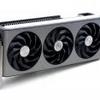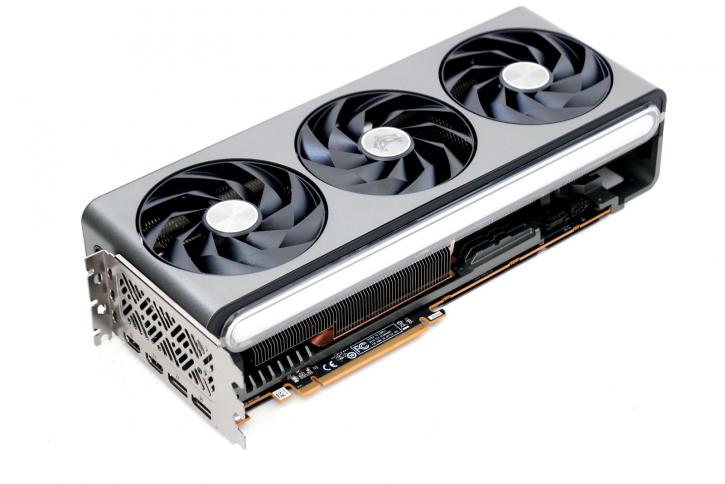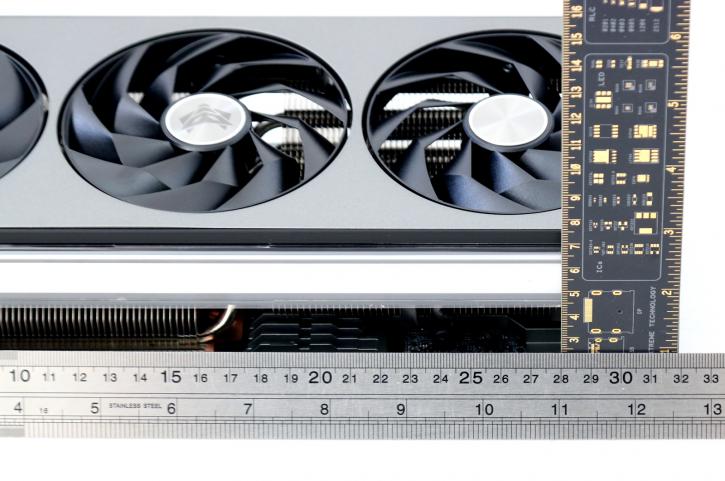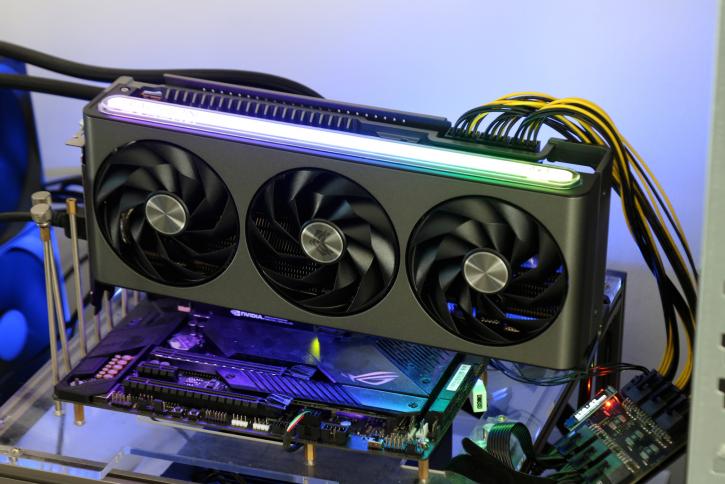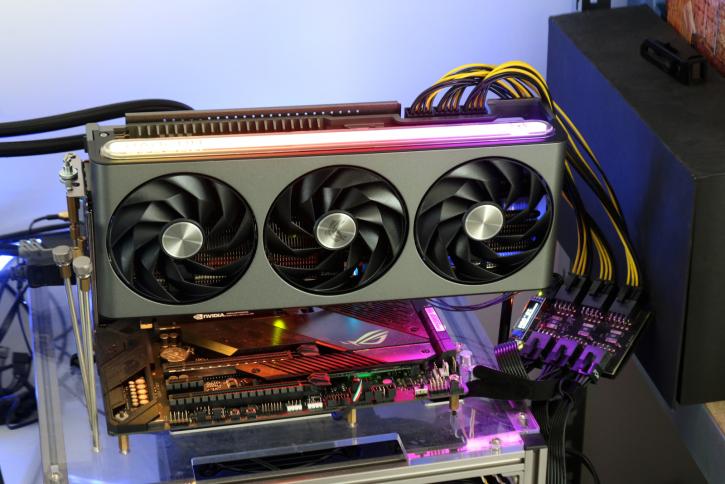Product photos
Product photos
The cooler for the Radeon RX 7900 XTX and RX 7900 XT boasts a triple-fan design with 9 weirdly shpaed blades on each fan. The AMD Radeon RX 7900 XTX will feature 96 CUs and 24 GB of GDDR6 memory, among other specifications. With three 8-pin power connectors, the Sapphire RX 7900 XTX Nitro+ will provide a great deal of extra headroom for overlockers, in addition to its boost frequency of 2.68 GHz and overall board power of 400W. The AMD Radeon RX 7900 XTX, like Nvidia's similar offerings, will feature built-in AV1 hardware encoding and decoding capability, making it a great choice for both streamers as well.
The card has a big heatsink running through it, and there is a little opening on the backplate that the last fan may use to disperse hot air externally. It weighs in at just over to 2kg. The newcomer also reveal two sizable ARGB lighting bars on the card's underneath and top. Sapphire TRIXX is the proprietary application, is used to regulate illumination. An RGB connector on the card lets you coordinate the lighting effects of the graphics card with those of other components in the PC.
The graphics cards have a triple-slot architecture and a quad-display output that includes two HDMI 2.1 port and two DP 2.1 ports.
Another difference between the ASUS and AMD's reference Radeon RX 7900 XTX and Radeon RX 7900 XT graphics cards is the lack of a USB Type-C connector, which most gamers will not need anyway. In its stead, there are three DisplayPort 1.4 connectors and one HDMI 2.1 port, all of which support 4K 120Hz+. Regarding customized models for the RX 7900 XT(X), Asus was one of the first board partners to announce them. Each variant of the Radeon RX 7900 XT and RX 7900 XTX will be available in two different configurations. Variants differ primarily in their GPU clock speed.
This model card has a Dual BIOS; the default BIOS is setup in performance mode, the second BIOS is more silent but also clocks back to reference value, (which is not the reason why you spend extra cash for a NIRTO+ edition we think). The card price at the time of writing is unknown, but we expect $1199. The new cards probably will not be able to compete head-to-head with Nvidia's offering, but they will be able to hold their own.
